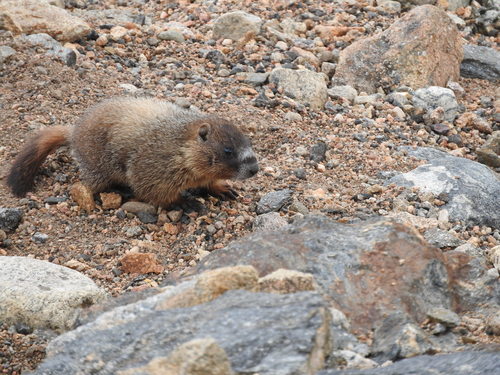|
| Common Animals Fish Mushrooms Flora |
|
Marmota flaviventris |
July: Birth of pups. Females give birth to 3 to 5 pups in their burrows.
Completely harmless to humans. When threatened, emits a loud whistle and hides in burrow. Among nomadic peoples, marmot meat was seen as medicinal. Fat was used for skin care and cold remedies. Marmot hunting was often a family activity in spring or fall.
Inhabits mountainous and steppe areas of Central Asia. Diurnal and hibernates in winter. Digs burrows with chamber systems and exits.
Spot-and-stalk hunting during clear weather while feeding Ambush near burrows using optics Luring with bait or sounds
Marmot is cautious and quickly retreats to its burrow. Timing is important — active in morning and evening. Use binoculars to scout from a distance.
Hide is suitable for tanning, especially in winter. Fat used in traditional medicine. Gut the carcass promptly to prevent spoilage. Meat is edible, considered dietary. Requires preliminary soaking.
Back: Roasting, frying
Hind leg: Braising, smoking
Front legs: Soups, boiling
Hind leg: Braising, smoking
Front legs: Soups, boiling
Roast Marmot (Roasting)
Meat is marinated due to gaminess
Meat is marinated due to gaminess
1. Soak meat 6–8 hours in vinegar with herbs.
2. Roast with potatoes and onions for 1.5 hours.
3. Serve with greens and spicy sauce.
2. Roast with potatoes and onions for 1.5 hours.
3. Serve with greens and spicy sauce.
Marmot Root Soup (Boiling)
Rich broth, good for cold weather
Rich broth, good for cold weather
1. Cut meat and boil with root vegetables for ~2 hours.
2. Add potatoes, salt, and spices to taste.
3. Serve hot with bread.
2. Add potatoes, salt, and spices to taste.
3. Serve hot with bread.
 United States · California · Shasta
United States · California · Shasta






